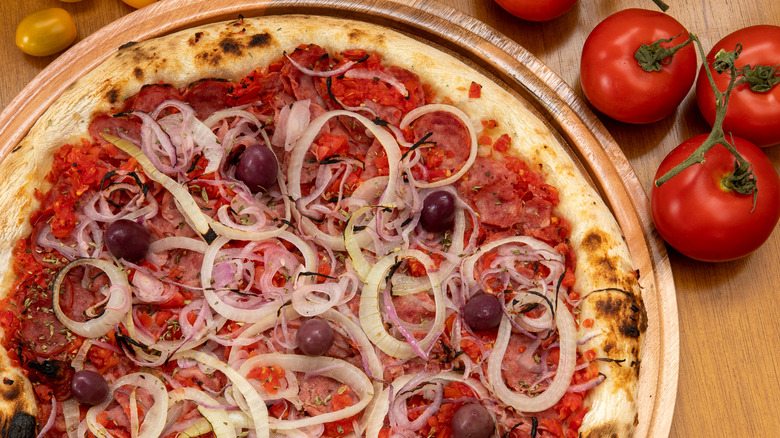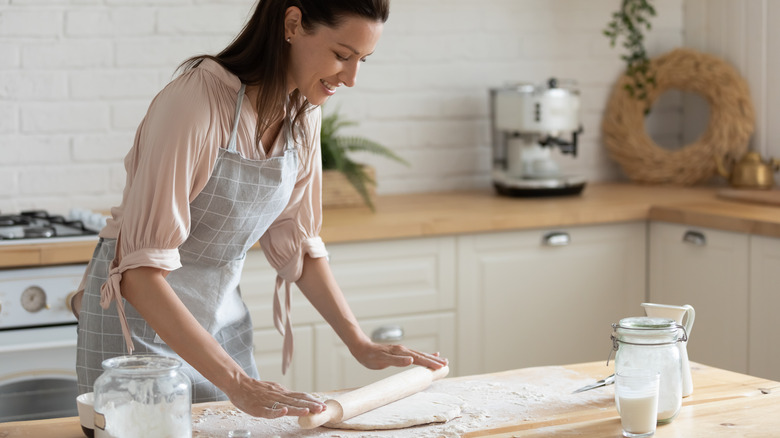What Makes Calabrian-Style Pizza So Unique?
Flour, water, yeast, and salt for the dough. Tomato sauce and cheese on top. For the most part, the ingredients used for making pizza are pretty standard across the board. But what makes the craft of pizza so exciting is how different the final product can turn out when different styles of preparing and cooking them are pursued and executed. Almost everyone has an opinion about which style of pizza is best.
Calabrian-style pizza is a form much less recognized than Neapolitan-, New York-, or New Haven-style pizza. And it's truly one of a kind. Hailing from Calabria, the southernmost region in mainland Italy, or "tip of the boot," if you will. This style of pizza is suitable for people who crave a thin crust with a bit of crunch. Most recipes for Calabrian-style pizzas are topping-heavy, and there are a few different recipes that include typical Calabrian toppings, like a Calabrian pizza with olives and 'nduja (via La Cucina Italiana). But what else differentiates Calabrian pizza from all the other styles?
No fancy gadgets necessary
The crispness of the base comes from a number of factors, including fat added to the dough mixture in the form of olive oil (via Bottega di Calabria). This also gives it a golden-brown color, making it visibly distinct from most other types of pizza. Additionally, rather than tossing the dough like a Neapolitan pizza, which adds air pockets to the crust that make it fluffier, a rolling pin is used to flatten the dough of a Calabrian pie, so it remains very flat like a cracker.
A longer cooking process than most types of pizza is the final step that factors into its crispiness. This also makes a Calabrian-style pizza a more adaptable option fit for most kitchen appliances. For example, a Neapolitan-style pizza requires a wood-fired oven that is typically between 800 and 1,000 degrees and will cook for five minutes (via A Couple Cooks). For Calabrian-style pizza, most recipes, like this one from Nonna's Way, recommend up to 20 minutes of cooking time at around 400 degrees, which can be achieved in most standard gas or electric ovens, making it a great option the next time you want to make pizza at home.

